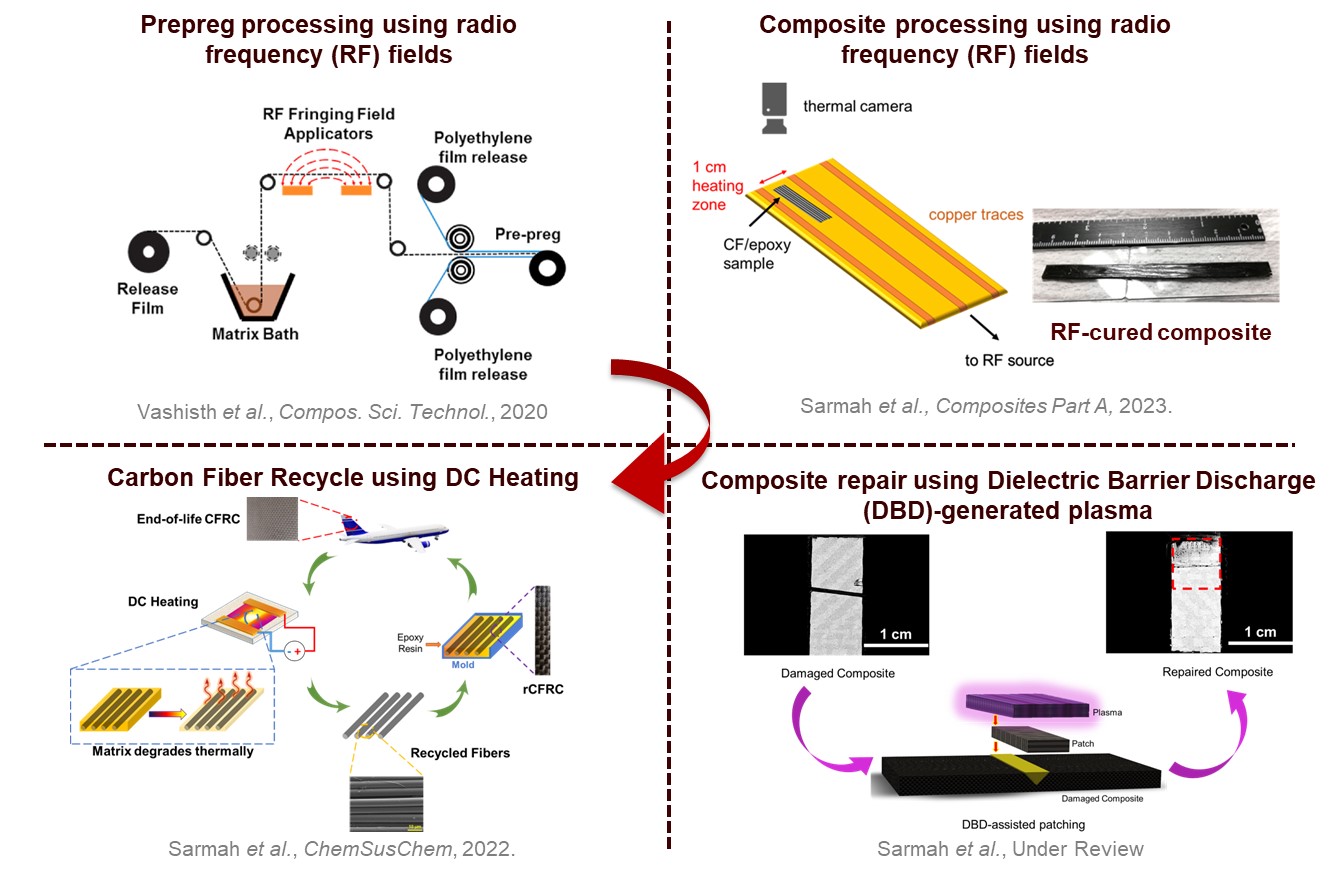(267e) Rapid Processing of Carbon Fiber/Polymer Composites Using Electromagnetic Fields
AIChE Annual Meeting
2023
2023 AIChE Annual Meeting
Topical Conference: Next-Gen Manufacturing
3D Printing of Composites
Monday, November 6, 2023 - 5:00pm to 5:20pm
Carbon fiber reinforced composites (CFRCs) are lightweight, mechanically strong, and resistant to chemical and thermal degradation. These properties make CFRCs a popular choice for various applications in military, aerospace, and automobile industries. The processing life-cycle of CFRCs consist of four major stages: fabrication of partially cured prepregs, curing of CFRCs for final applications, repairing of damaged CFRCs, and recycling carbon fibers from end-of-life composites. Conventionally, all these stages rely on large autoclaves or ovens for heat, rendering all these processes extremely energy inefficient. Our group utilizes electromagnetic fields for rapid processing of CFRCs. Carbon fibers rapidly heat up when exposed to non-contact radio-frequency (RF) fields. Thermal energy is generated by the carbon fibers interacting with the RF fields (1–200 MHz range) and drives the crosslinking reaction in the surrounding epoxy to successfully make prepregs of varying degrees of cure, depending on the curing temperature and time. Next, RF fields were also used to further cure these prepregs and fabricate fully-cured CFRCs. Mechanical testing of these composites show that the interfacial modulus and tensile strength of composites cured at the same temperature via RF heating or oven heating show comparable mechanical properties. Composites in the field require repair and maintenance due to wear and tear over their lifecycle or even due to damage in the line of duty. We have explored the possibility of using Dielectric Barrier Discharge (DBD)-generated plasma to carry out such repair processes. The damaged crack was covered by a prepreg patch, and then exposed to an electric field plasma, which heats up the fibers in the prepreg and cures the patch. The patch essentially acts as a structural additive to the damaged part, and mechanical testing showed that composites repaired using plasma or conventional oven heating show similar percent recovery of strength compared to the damaged composite. Finally, direct current (DC) heating was used to recycle continuous carbon fibers from end-of-life composite scrap. Existing methods for CFRC recycling either require large, energy-inefficient ovens, or a mechanical milling process which yields chopped fibers. The electromagnetic heating method we developed allows for recycling of continuous carbon fibers, which have mechanical properties similar to oven-recycled fibers, and we have also successfully demonstrated that recycled fibers can be used to make composites for further use in the industry. We have successfully addressed all the stages of CFRC processing and have replaced conventional methodologies with electromagnetic heating to yield an energy efficient, industrially scalable alternative. Next steps include development CFRC additive manufacturing technologies.


